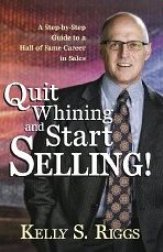 Last weekend, I had an interesting conversation with a lawyer about the proper use of visuals in persuasive presentations. In the courtroom, lawyers have to sell—their buyers may be jurors or judges, but the elements of persuasive appeals are probably no different for them than they are for buyers.[1] We talked about Edward Tufte’s ideas, and he asked me for some suggestions for additional reading, which I thought I would share in this article.
Last weekend, I had an interesting conversation with a lawyer about the proper use of visuals in persuasive presentations. In the courtroom, lawyers have to sell—their buyers may be jurors or judges, but the elements of persuasive appeals are probably no different for them than they are for buyers.[1] We talked about Edward Tufte’s ideas, and he asked me for some suggestions for additional reading, which I thought I would share in this article.
There is no “best” book on persuasive visuals—it all depends on what you’re presenting, to whom, and how many are in the audience. I’ve selected a few of my favorites that cover the range of possible presentation scenarios. To make sense of the order in which these titles are presented, think of a continuum: at the left side is a page densely packed with information, a la Tufte, and at the right side is a ballroom presentation, such as Steve Jobs introducing the iPhone. (Hyperlinks will take you to my more detailed book review.)
Speaking PowerPoint, by Bruce Gabrielle. This excellent book shows that Tufte is wrong when he says that PowerPoint causes poor thinking. Gabrielle shows how to first organize your thoughts for credibility and clarity, and then put them on slides.
 Why am I reviewing a book on mentoring in a blog on persuasive communication? The first reason is that Chip Bell, whom I’ve known for many years, sent me a copy[1]. The second reason is that, even if you don’t plan to mentor others, many of the skills in this book are indispensable for persuasive communications. Although the examples are geared towards the mentoring process, there is a lot of practical utility that can be applied to making you a more effective communicator overall.
Why am I reviewing a book on mentoring in a blog on persuasive communication? The first reason is that Chip Bell, whom I’ve known for many years, sent me a copy[1]. The second reason is that, even if you don’t plan to mentor others, many of the skills in this book are indispensable for persuasive communications. Although the examples are geared towards the mentoring process, there is a lot of practical utility that can be applied to making you a more effective communicator overall.
The authors define mentoring as “the act of helping another learn”. Notice that’s it’s not about “teaching”, it’s about ensuring the other person learns. Mentors help others to learn something that they might have learned slower, not as well, or not at all.
When you see it that way, the parallels between mentoring and selling and persuasion in general become obvious. Selling is the act of helping another buy, and persuasion is the act of helping another decide. The key theme is that the power to change comes from inside the other person. As the authors so eloquently put it, “change is a door opened from the inside.”
It’s not about you—it’s about the other person.
 Judging by the title, you would think that Quit Whining and Start Selling is one of those motivational books that is long on exhortation and inspiration and short on practical advice. At least that’s what I thought when Kelly Riggs asked me to review his book.[1] I was skeptical—not because I’m opposed to motivation but because you’re not likely to find it in a book.
Judging by the title, you would think that Quit Whining and Start Selling is one of those motivational books that is long on exhortation and inspiration and short on practical advice. At least that’s what I thought when Kelly Riggs asked me to review his book.[1] I was skeptical—not because I’m opposed to motivation but because you’re not likely to find it in a book.
The book is actually very engaging and motivational, but, the title does the book a disservice, because its real strength is in its practical, solid sales advice. Reading this book is like having a wise and experienced sales coach looking over your shoulder providing guidance on the critical performance factors at each stage of the sales cycle. The book is arranged in eight parts, roughly in the order of the sales cycle:
Part I frames the discussion by defining the elements that lead to sales success. Riggs reminds us that none of us is destined to success or failure—“you are destined to whatever you have the desire and the discipline to create.“ The discipline part comes in the form of the next six parts: defining what your customers are buying, analyzing and planning your work and your sales approach, and improving effectiveness at each stage of the sales cycle.
Part II, What Are You Selling?, gets you thinking about what your product or service means to the customer. Kelly reminds us that superior products do not just sell themselves, and the standard trite talk about quality, service and value does nothing at all to differentiate you in the customer’s perception.
Part III is the shortest in the book, comprising only two chapters, but in my own opinion it’s the most important concept of all. It’s best encapsulated in the quote by Deming: “If you can’t describe what you’re doing as a process, you don’t know what you’re doing.” An effective sales process is the key to consistent sales performance, and the only way to know what is working and what isn’t.
Parts 4-7 show how to improve your effectiveness in each stage of the sales process: Planning, Discovery, Presentation and Delivery. This is where the meat of the book comes in with specific face to face selling ideas and techniques.
Part VIII is about personal success habits, and is the most “motivational” part of the book. It’s a useful reminder that you have to work smarter and harder to reach the top 1% of your profession.
Quit Whining and Start Selling is also a good read, full of engaging stories and examples that illustrate important points. I also appreciated that each chapter is book-ended by excellent quotes that set the stage at the beginning of each chapter and brief “1-on1 principles” that sum up the principal lesson.
I wrote earlier that you’re not likely to find motivation in a book, but upon reflection that’s not quite accurate. Motivation does not come from hearing things you already know; it comes from learning new things that you know can improve your results if you implement the process. Process plus discipline will carry you through even when short term enthusiasm fades away. If you look at it this way, Quit Whining and Start Selling is a quick read that can have lasting impact on your sales career.
Note: You can purchase the book in soft cover directly from Kelly’s web site, or a Kindle version from Amazon.
[1] That’s my subtle way of introducing the fine print disclaimer. I provided a promotional blurb for the book. (Not that it made the cover.)
 If you want to be different from your competitors, build your credibility with prospects and customers, and get your audiences more engaged in your presentations, Whiteboard Selling: Empowering Sales Through Visuals
If you want to be different from your competitors, build your credibility with prospects and customers, and get your audiences more engaged in your presentations, Whiteboard Selling: Empowering Sales Through Visuals, by Corey Sommers and David Jenkins can show you how.
As the title of the book indicates, the authors urge salespeople to can their slides and conduct their presentations interactively using a whiteboard.
There are some strong arguments for getting away from slide decks:
- As I’ve written before, senior level executives (and probably everyone else) often dread having to sit through the standard sales deck, with its reams of slides displaying the “company history” and walls of words. If you show up and do something different, they will definitely pay attention.
- Some salespeople are just projector operators. They show up, connect the laptop, and read off the screen a presentation that someone else put together. If you could train a monkey to operate the projector, or better yet, just email the slides in advance, you would deliver equal credibility and value at a much lower cost.
- Sustainable agreements are much more likely when the customer is actively engaged in telling you their story and building the solution with you. The design of most presentations fosters a transmit-only approach and discourages questions and interactivity.
Whiteboard Selling shows how to encapsulate a large slide deck into a single whiteboard that builds the story you need for particular stages in the sales cycle, including qualification and discovery, why change, competitive comparison, making the business case, and closing. That’s a particular strength of the book—it’s as much about effective sales process as it is about presentations.
In their words, “it should be a cohesive visual that tells a singular story within a defined space”. This phrase neatly captures the two principal advantages of the whiteboard approach. It allows you to build a story with your customer while also harnessing the power of visuals. You’ll know you succeeded when the customer insists on saving what’s on the board so they can sell the idea internally.
Even if you don’t want to take the drastic step of getting rid of your slides entirely, the discipline of going through the whiteboarding process would definitely sharpen your thinking and your delivery.
Some people reading this review might shudder at the thought of unleashing your sales force onto the world armed with nothing but colored markers. How do you ensure quality and consistency? Have no fear; the book is actually written with sales and marketing managers as its audience, and devotes substantial space to the process of designing, training and implementing a whiteboard approach in your sales organization. As such, it’s not really a “how-to” for individual sales professionals, although any reasonably intelligent and experienced salesperson could probably design their own.
While the general approach outlined in the book makes excellent sense, I would guess that the challenge—and effectiveness—of rolling out the process to the entire sales force is not as straightforward as the book makes it appear. In fact, the close scripting required to ensure a consistent message would seem to detract from the flexibility and natural flow that effective sales conversations require, possibly defeating the purpose.
Maybe the ideal approach combines the best of both approaches. Ironically, the authors advocate using PowerPoint to design the whiteboard templates to begin with. That got me thinking: why not combine both approaches? Tablets running MS Office could be used to project slides, and the presenter could write and draw on the slides just as with a whiteboard. It’s worth finding out, and I plan to experiment with the approach and write about it in upcoming posts.


